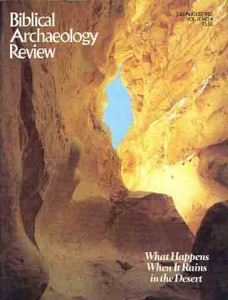Scholars’ Corner: Digital Images Expose Ancient Inscriptions
A trio of scholars has recently explained how an electronic camera can be used to read otherwise unreadable ancient inscriptions.a To enhance vague images on ancient manuscripts, this team of scholars used an electronic camera and image-processing techniques developed for space photography at the National Aeronautics and Space Administration (NASA) Jet Propulsion Laboratory administered by the California Institute of Technology.
An electronic camera does not use photographic film. Only in the final stage of presentation is the information translated into visual form. Basically, the camera electronically measures the brightness of a great many points (or pixels) in its field of vision. Three to five pixels are usually sufficient to measure the width of a pen stroke. The electronic camera provides what scientists call a digital image—that is, the presentation of a picture in a numerical format. Each pixel is assigned a number in accordance with its brightness. Once a picture is recorded in digital form, it can be manipulated in various ways, with or without a computer, to enhance its image. After enhancement the digital image can be transformed into a visual image.
Already a library member? Log in here.
Institution user? Log in with your IP address.

